Cards In This Set
| Front | Back |
 What are the artistic features of this vase? |
-The scene ends with two shields and both scenes portray a similar mood (hope/freedom)
-Facial features are realistic; eyes are in profile.-Foreshortening is used, eg the dead Trojan at Neoptolemus's feet.-Attention to detail, eg the intricate design on Neoptolemus' armour. -Anchises' age is shown by a stubby beard and walking stick.-The shield of the dead Trojan is shown in perspective.-The armed Greek soldier is contrasted with the unarmed, courageous Trojan woman. |
 1) What shape is it?2) What is it for?3) Who painted it?4) What style is it?5) When was it made?6) How big is it?7) What inscriptions are there? |
1) Volute Krater.
2) Mixing wine and water at symposiums. 3) The Berlin Painter. 4) Red Figure. 5) 500- 480 BCE. 6) 65cm. 7) Figures are named. |
 What is happening on this vase? |
-Achilles and Memnon are fighting. We can see Achilles will win because his mother, Thetis, urges him on while Memnon's mother, Eos, watches in anguish. [side A]
-Achilles is about to kill Hector. [side B] |
 What are the artistic features of this vase? |
-Achilles' 3/4 pose is mirrored by the back view of Memnon.-The drapery of Eos flows out, suggesting she is moving away.-The warriors are framed by their divine mothers.-Side A is symmetrical, forming a W shape.
-On side B, the interior view of the shield makes Achilles seem bulkier than Hector. -Hector's body is curved and his shield is behind him to show he is falling backwards. -Foreshortening is used.-The majority of the vase is black which draws attention to its elegant shape and to the figures on the neck.-Eos pulls her hair in grief, her arm is raised to Memnon.-Achilles' back leg is raised to show movement.-Apollo carries an arrow and appears to be waving goodbye to Hector, maybe to suggest both Achilles (and Hector's) fate. |
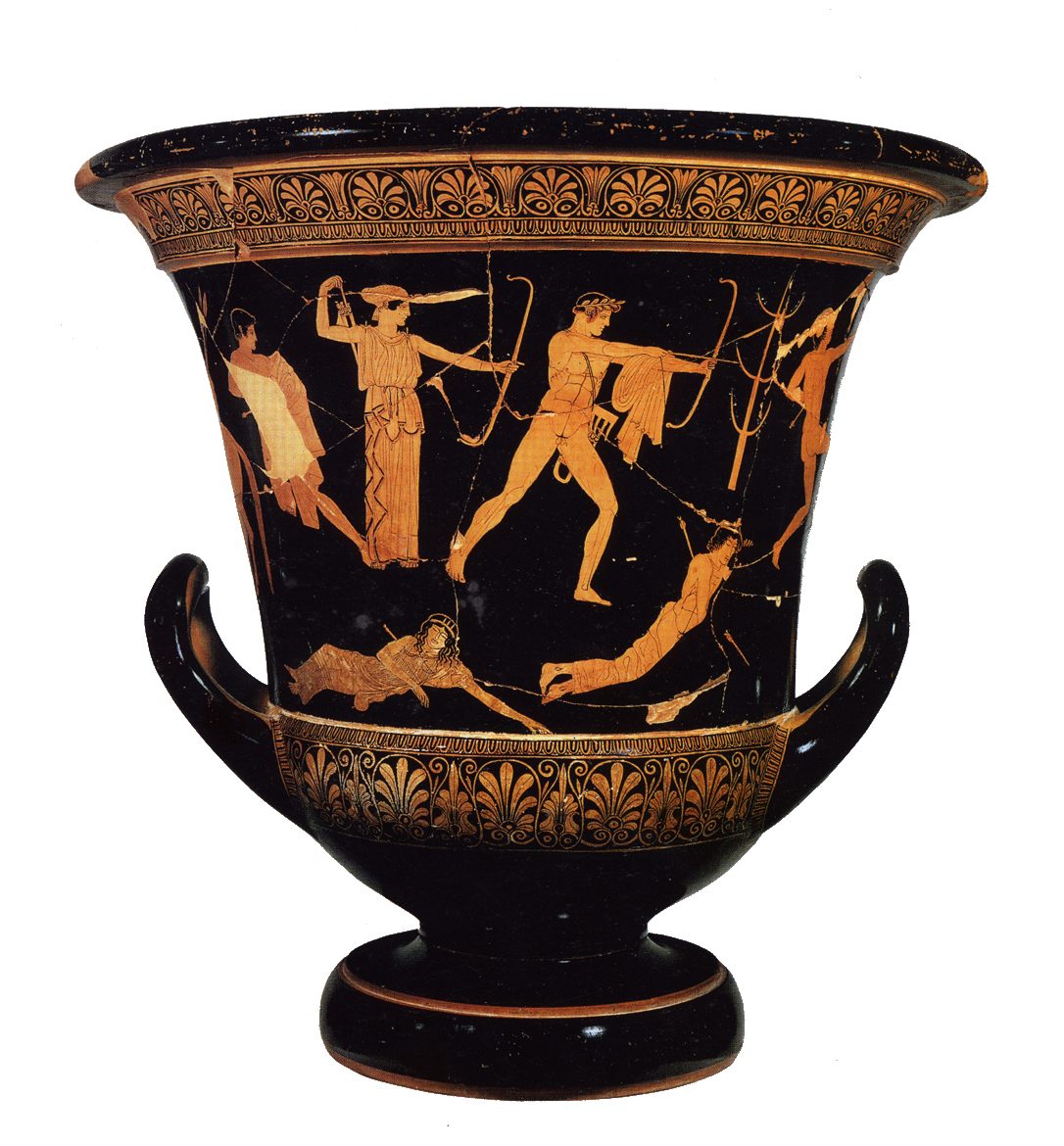 1) What shape is it?2) What is it for?3) Who painted it?4) What style is it?5) When was it made?6) How big is it?7) What inscriptions are there? |
1) Calyx Krater.
2) Mixing wine and water at symposiums. 3) Niobid Painter. 4) Red Figure. 5) 470 - 450 BCE. 6) 55cm. 7) None. |
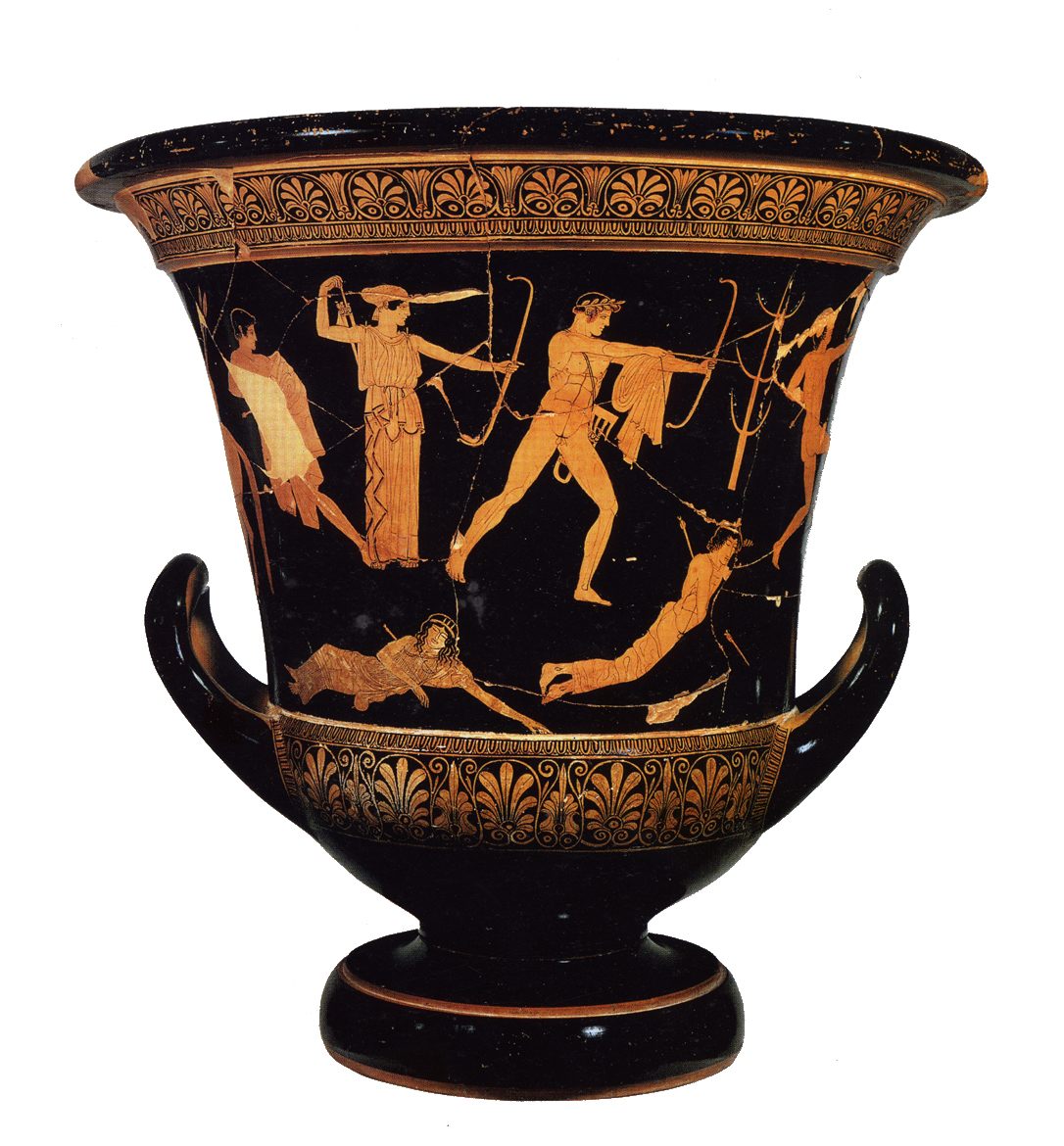 What is happening on this vase? |
-Probably depicts Herakles' journey to the underworld to rescue Theseus or it could be the gathering of the Argonauts or the seven against Thebes [side A].-The God Apollo and his sister are killing the children of Queen Niobe because she bragged about having more children than them [side B].
|
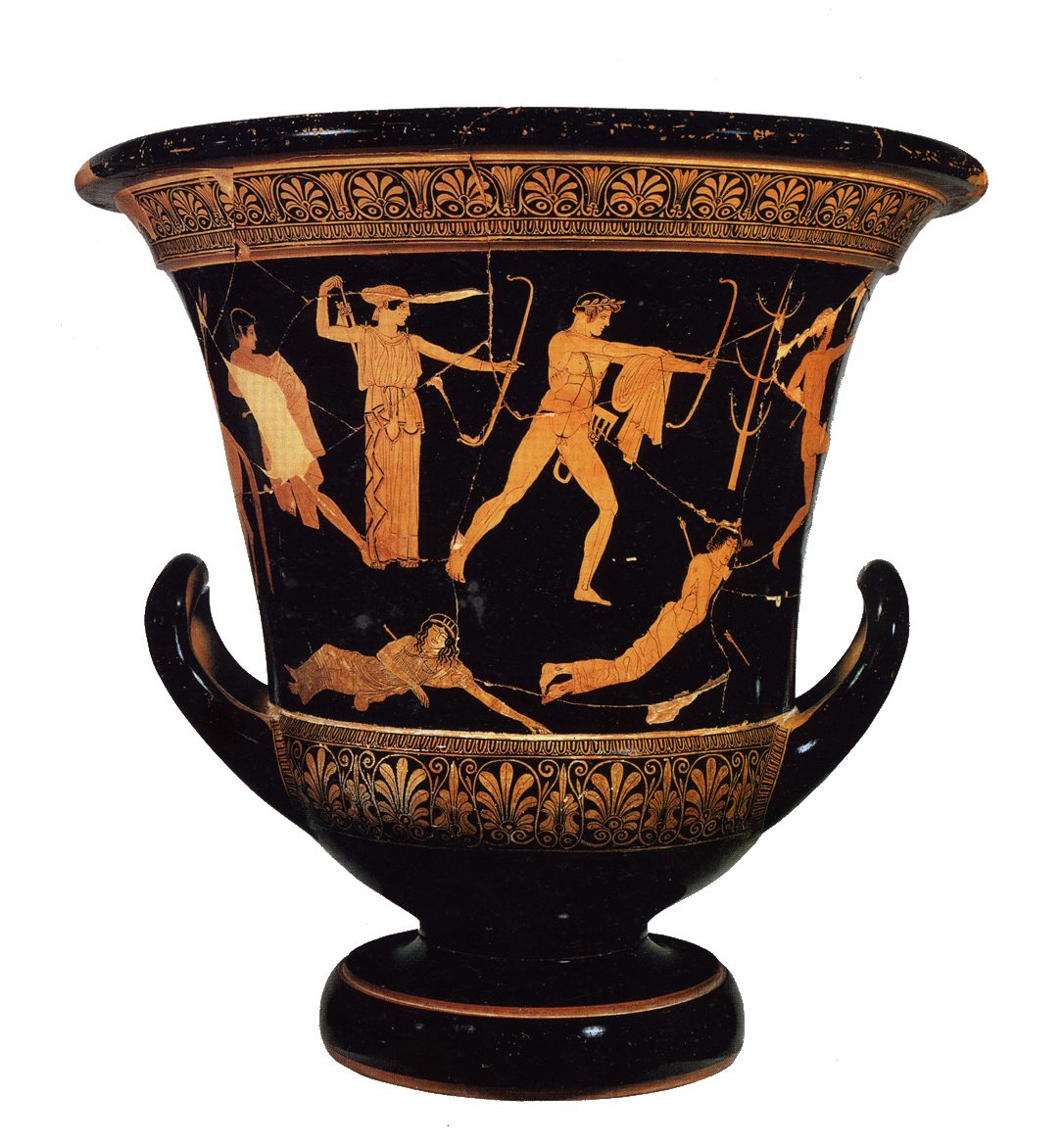 What are the artistic features of this vase? |
-The figures are arranged on an uneven groundline to give depth.-Foreshortening is used, eg Theseus' shield, warrior's foot.-Directed vision ties the scene together.-True profile eyes are portrayed.-Uneven ground line creates a basic landscape as does the tree on side B.-Drapery models the body underneath and softer folds/ zigzags make them more realistic.-Innovative poses, eg 'recliner' [Theseus] and friend.-Apollo and Artemis fill the centre of the composition on side B.-Apollo is slightly smaller than Artemis; maybe he is moving forward?
|
 1) What shape is it?2) What is it for?3) Who painted it?4) What style is it?5) When was it made?6) How big is it?7) What inscriptions are there? |
1) Pyxis.
2) A jewellery or cosmetics box for tombs. 3) The Penthesileia Painter. 4) White ground ware [and red figure]. 5) 460 - 450 BCE. 6) 17cm. 7) Figures are unnamed but there are two "kalos" inscriptions. |
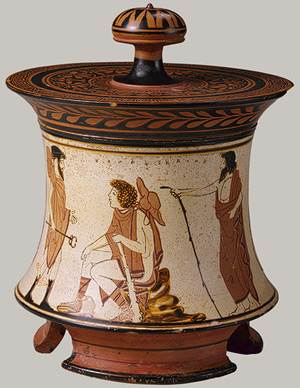 What is happening on this vase? |
-Paris is sitting on a rock talking to Hermes [side A]-The Goddesses are depicted.
|
 What are the artistic features of this vase? |
-The rock under Paris is the only shaded object, which shows its rugged shape.-A calm mood is conveyed through Paris' relaxed pose.-Foreshortening is used, eg Paris' leg.-Drapery does not reveal the form of the body but gives an illusion of 3D.
|
 1) What shape is it?2) What is it for?3) Who painted it?4) What style is it?5) When was it made?6) How big is it?7) What inscriptions are there? |
1) Lekythos.
2) Carrying oil and perfume at funerals. 3) The Achilles Painter. 4) White Ground Ware. 5) 450 - 440 BCE. 6) 38.4cm. 7) Kalos inscription in rectangular shape. |
 What is happening on this vase? |
-A maid servant is giving her mistress a grey casket.
|
 What are the artistic features of this vase? |
-Stopped meander border.-Profiles are much more realistic, including eyes. Figures appear severe, godlike and removed from the human world; like the sculptures of this period.
|
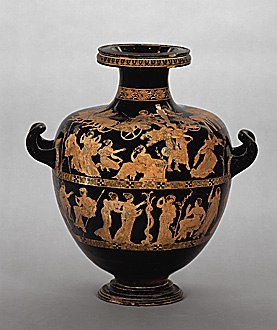 1) What shape is it?2) What is it for?3) Who painted it?4) What style is it?5) When was it made?6) How big is it?7) What inscriptions are there? |
1) Hydria.
2) Carrying water. 3) Meidias Painter / Meidias. 4) Red Figure (Mannerist) 5) 410 - 400 BCE. 6) 52cm. |
 What is happening on this vase? |
-The abduction of the daughters of Leukippos, Phoebe and Hilaeira by Castor and Pollux from the sanctury of Aphrodite [upper frieze].-Herakles is going to take the golden apples from the garden of Hesperides (his 11th labour) [lower frieze].
|



